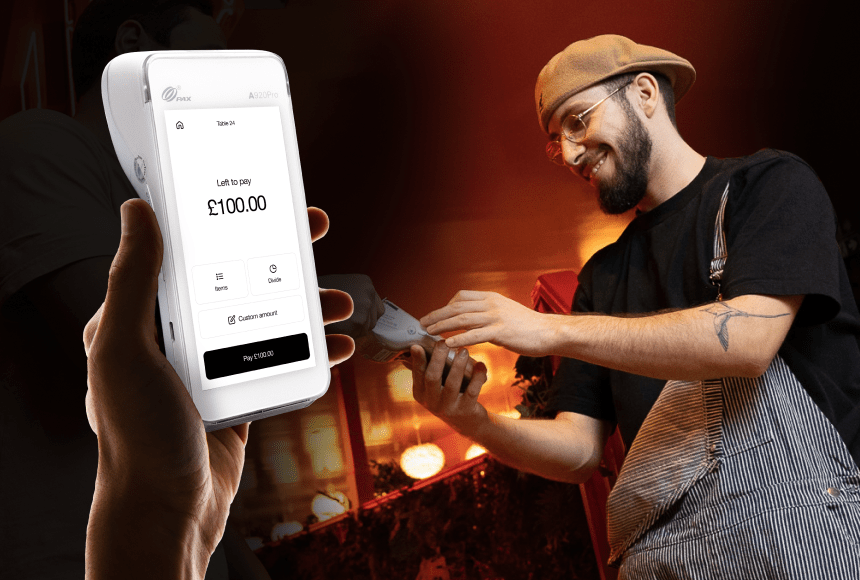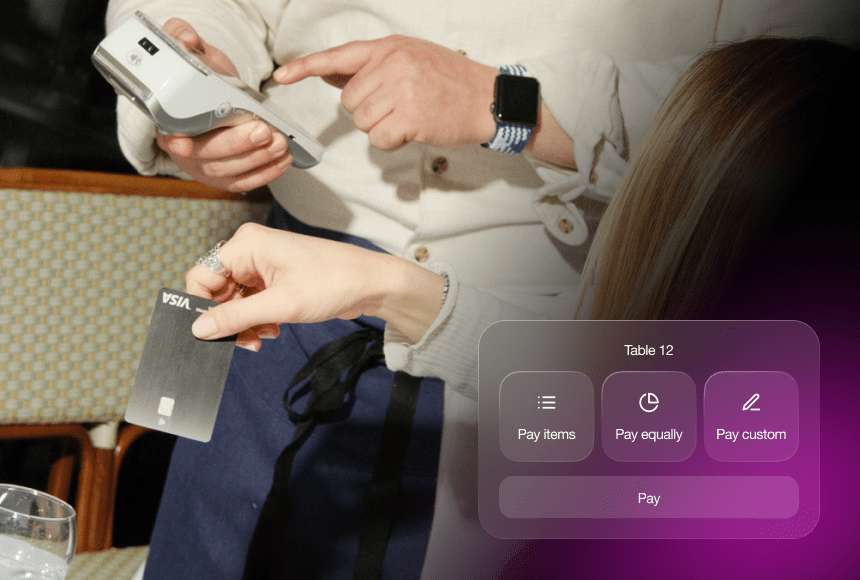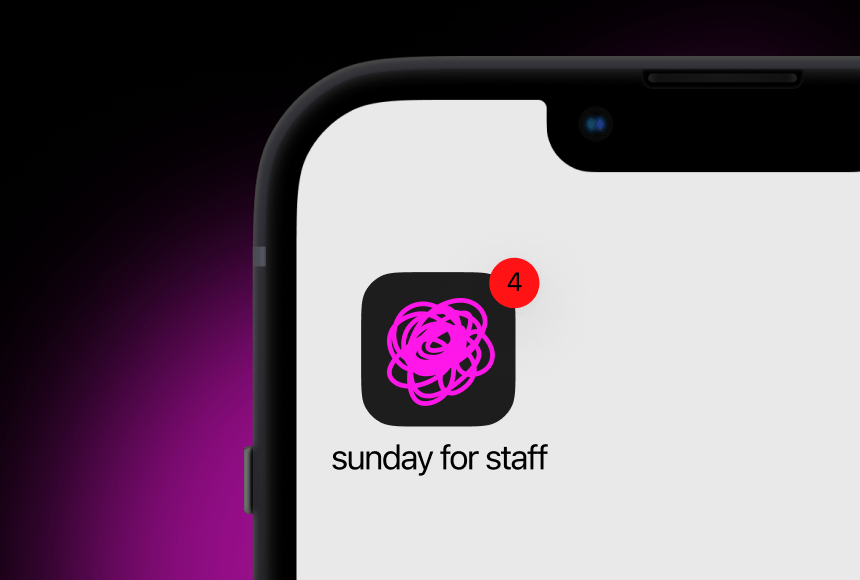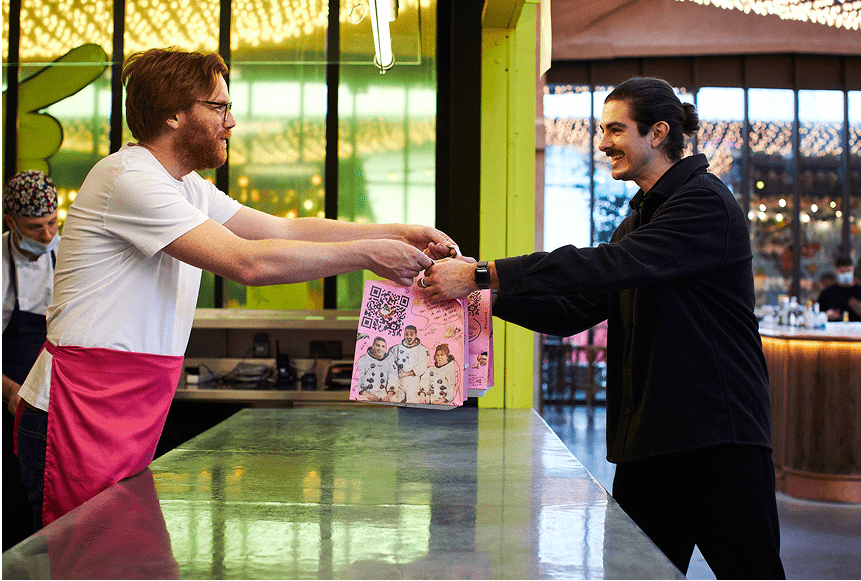
Elevate Your Restaurant Game with Smart Terminals and Well-Trained Teams
Why Embracing Smart Terminals Matters
If you run a restaurant in the UK, you already know that efficiency, speed, and exceptional customer experience are crucial ingredients for success. From the hearty local pub to the chic city bistro, all restaurateurs share a common goal: streamlined operations and happy guests. And that’s exactly where modern smart terminals (sometimes called card machines or payment terminals) make their grand entrance.
What distinguishes smart terminals from the traditional models? Unlike standard card machines that simply process payments, smart terminals often connect to the Internet, integrate with your point-of-sale system, and even help you streamline tasks like splitting bills and printing receipts. They can also incorporate digital solutions such as QR codes—increasingly popular for processes like ordering, paying, and tipping. With the right device, you’re not just upgrading your hardware—you’re transforming the entire guest experience.
According to a recent study by UKHospitality, restaurants adopting modern payment technology have improved table turnover rates by up to 15%. That’s 15% more covers, more tips, and more satisfied diners. The numbers tell a compelling story: adopting the right payment solution isn’t a fancy luxury; it’s an investment in growth.
Gone Are the Days of Slow Service
Picture this scenario: your waitstaff is running back and forth between the kitchen and the front of house, there’s a queue of customers eyeing the bar, and a table of impatient diners just wants to pay and leave. Meanwhile, your elderly payment terminal is acting up. This is precisely where newer, smarter payment terminals truly shine. Instead of marooning your guests in an endless wait, your team can bring the payment process right to the table with minimal fuss.
Smart terminals work like a well-orchestrated brigade in the kitchen: everyone knows their role, and there’s no wasted movement. Your staff can take orders, send them directly to the kitchen, accept cards or mobile payments on the spot, and instantly generate digital receipts. This quick, contactless, and convenient process has become a must-have. Smoother service means happy diners, which often translates into better tips, improved ratings, and more repeat visits.
Where “Staff Training” Starts: The Basics
Just like you’d never hand a trainee chef a knife without teaching them to chop vegetables properly, you should never expect your team to use cutting-edge payment terminals without the right training. Even the most intuitive device will cause friction if staff skip the basics. If you’re the type who invests in top-quality produce, you’ll appreciate that equipping your team with skills is just as important as having the best ingredients in your kitchen.
Here are a few fundamentals to tackle when introducing any new technology:
- Device Familiarity: Ensure every server and manager knows how to switch the terminal on and off, connect it to Wi-Fi, and update the software. Think of it as the mise en place of the payment process.
- Common Hiccups: What happens if the battery is low? Are there connectivity issues? Give your team a quick troubleshooting guide, so they don’t panic at the first sign of a glitch.
- Security Protocols: Emphasise PIN confidentiality, contactless payment limits, and data protection. Customers need to feel safe. A bit of reassurance goes a long way.
- General Etiquette: Demonstrate how to hand the terminal to the guest and how to politely guide them through impressions, tips, and other requests (like email receipts or loyalty sign-ups).
Familiarising staff with these foundational points from day one sets them up for success. Much like seasoning a dish correctly, small details can make a huge difference in how your guests perceive your establishment.
Building the Perfect Training Recipe
Staff training shouldn’t be a burdensome chore. In fact, it can—dare we say it—be fun, especially if you craft a consistent, interactive training programme. Think of creating a staff development plan the same way you’d create a new menu. Start with the core goals (speed, accuracy, great communication), add in modules or “courses” to build skills, and keep testing and refining. Here’s a simple training model you can adapt to your restaurant:
- Onboarding Modules: Provide short, bite-sized lessons on how the payment terminal works, followed by hands-on practice. This could be a simple, 15-minute demonstration, repeated for clarity.
- Role-Playing Sessions: Encourage your team to practise a variety of guest scenarios—card declines, partial payments, or applying discount vouchers. Just like a simulation in a cooking class, hands-on practice is the best teacher.
- Shadowing: Pair new hires with experienced staff to see real service in action. Observing how a skilled colleague handles the evening rush is invaluable—like learning a cooking technique by watching a seasoned chef.
- Refresher Courses: Once a month or every few weeks, host brief sessions focusing on new features or lesser-known tips. This helps keep everyone’s knowledge fresh, encourages questions, and sparks confidence.
It doesn’t take a Michelin-starred budget to implement these training ideas. The key is consistency and engagement, ensuring that everyone—chef, host, server, manager—knows their way around both the kitchen and the payment process.
Technology That Speaks Your Language (and Your Staff’s)
Nobody likes using clunky, complicated interfaces. If your technology is a headache, your staff won’t be excited to use it—and it’ll inevitably slow service. When choosing a smart terminal, consider the user interface design. Ask yourself:
- Is the screen large enough to navigate easily?
- Does the software have an intuitive, icon-based menu?
- Is it easy to switch between tabs? Does it support multiple languages if needed?
- Are payment steps logically laid out, so staff can quickly ring up multiple items or split bills?
A user-friendly terminal is like a perfect kitchen layout with easy access to the hob, prep station, and dishwasher. Your team won’t waste energy fumbling around. Instead, they’ll be able to focus on the guest’s experience.
And consider the bigger picture: your terminal might integrate with your POS and your table management software. Some solutions can sync automatically across devices, track item sales, and even push real-time data to your back office. On top of that, solutions like sunday allow guests to scan a QR code to pay instantly, tip, and share a quick Google review. The fewer steps required, the smoother your operation becomes.
Smart Terminals Beyond Payment: The Bonus Features
Beyond simple credit card processing, many smart terminals these days come loaded with extras. Depending on your restaurant’s needs, this can include features like:
- QR Code Generation: Displaying a QR code to let customers view the menu, pay, or leave a tip without waiting for a server. Solutions like sunday make it simple for guests to pay quickly while freeing your team to attend to other tables.
- Customer Feedback: Prompting guests to rate their experience on Google or fill out a quick survey. This immediate feedback loop can be a powerful tool for gauging diner satisfaction.
- Loyalty Programmes: Automatically enrolling guests in your loyalty plan or awarding points on the spot—imagine forging stronger bonds with your regulars.
- Staff Performance Tracking: Monitoring transaction times per table or per server. This data offers insights into how quickly your team is operating and highlights who might need more training or praise.
The importance of these bonus features is often undervalued. Yet, they can turn ordinary service into a memorable dining experience. You wouldn’t leave out a key spice in a signature dish, would you? Similarly, neglecting these extras means losing a valuable opportunity to enhance both your revenue streams and customer satisfaction.
Overcoming Resistance: Supporting Long-Standing Staff
Change can be intimidating for employees who have worked in one way for years. Perhaps you have a veteran server who’s always used a basic card machine and never liked the idea of “smart” anything. So how do you encourage acceptance and positivity when rolling out new technology?
Start with empathy and reassurance. Emphasise that smart terminals are designed to simplify daily tasks, not complicate them. Highlight how easy it becomes to process payments, split bills, or add tips—overcoming the “fear factor.” Provide patient, step-by-step in-person demos and offer one-on-one sessions if necessary. Recognise—and celebrate—when staff members learn a new skill or handle their first complicated split transaction.
Employees who feel supported and valued are more likely to invest in the restaurant’s success. Think of it like cooking an unfamiliar new dish: you wouldn’t throw someone into it without a proper recipe and an understanding of the necessary techniques. By showing empathy and patience, you create an environment of trust.
Nailing the Payment Process: A Step-by-Step Overview
If you’re diving into smart terminals for the first time, it can help to outline the typical payment flow in a restaurant, from the arrival of the customer’s order to the final “thank you.” Even though each restaurant might adapt these steps to their style, the underlying logic is often similar:
- Order Entry and Table Management: A server takes the order—either via a POS or a handheld device—and the kitchen is automatically alerted.
- Meal Service: The diners enjoy their food, and you keep an eye on them for drink refills or extra sides.
- Payment Request: When guests are ready to pay, the server either brings a payment terminal to the table or offers a QR code. If you’re using something like sunday, the diners can scan, pay, and go.
- Choosing Payment Method: Card, contactless, mobile wallet, or even a gift card—smart terminals accept various options without skipping a beat.
- Approval and Receipt: The terminal processes the transaction, authorises the payment, and prints or emails the receipt. Some terminals allow guests to tip directly on the screen, while in others, servers might add it before finalising.
Each of these steps can be optimised with the right training and technology. The end goal? A seamless customer experience that translates into glowing recommendations and repeat visits.
Cutting Costs and Boosting Revenue
Smart terminals are often seen as an extra expense. True, there may be monthly fees, and the hardware itself has a cost. But through improved efficiency, reduced human error, faster table turnover, and the opportunity for higher tips, most restaurants find they can recoup the investment fairly quickly.
For one, eliminating manual errors—like entering the wrong amount or misreading the receipt—protects you from costly slip-ups. Additionally, the ability to serve more customers in less time (without them feeling rushed) increases your earnings potential. A UK government report on small businesses highlighted that restaurants adopting digital payment solutions saw a noticeable rise in revenue. A well-trained team, rapid payment processes, and happier diners all combine to bolster your bottom line.
Think of investing in reliable technology and training as paying for premium kitchen knives. Sure, they cost a bit more upfront, but their longevity, ease of use, and higher performance more than justify the price.
Providing Memorable Customer Experiences
Ultimately, every decision you make—whether it’s the day’s special or the choice of payment technology—should enhance the customer’s experience. Payment might be the last interaction your guests have with your team. If that final step is quick, personalised, and secure, it leaves a positive impression.
Smooth checkouts also let you add personal touches: a warm, genuine “thank you,” a quick conversation about the dessert they just tasted, or a recommendation for their next visit. In this sense, the payment process can be as much a part of your restaurant’s identity as your décor or menu selection.
And remember: with smart terminals, you can encourage patrons to leave immediate online reviews. Diners who just have had a lovely experience (and who can pay and tip effortlessly) may be far more likely to share positive feedback on Google. This builds an undeniable advantage in a food scene where many prospective customers decide where to eat based on online ratings.
Practical Tips to Kickstart Implementation
Upgrading to smart terminals and training your staff effectively doesn’t have to consume all your time or resources. Here are a few practical steps to get started:
- Start Small: Introduce a limited number of terminals in a pilot section of the restaurant. Collect feedback from staff and guests before rolling it out everywhere.
- Inclusive Training: Don’t forget the kitchen staff. Even if they’re not handling payments, they need to understand how changes in the front of house can affect overall service flows.
- Offer Incentives: Encourage better performance or successful adoption with staff rewards—perhaps a small monthly bonus for the server with the highest feedback scores or the fastest transaction times.
- Continuous Communication: Set up a group chat or a noticeboard for employees to share tips, ask questions, or highlight tricky transactional situations. Daily or weekly reviews can keep knowledge fresh.
By taking small but steady steps, your restaurant can feel the benefits of these technologies in no time.
Case Study: The Country Bistro Adopts Smart Terminals
Let’s take a quick look at a fictional example of how a small country bistro adapted to smart terminals and effective staff training:
- Before: Old card machines caused slow table turnarounds, leading to frustration during busy times. During weekend evenings, a queue of customers often stood waiting to pay at the till.
- Transition: The owner decided to switch to modern solutions that integrated with an existing POS. They conducted three short training sessions over a week, teaching staff how to process payments table-side using new wireless terminals.
- After: Within two weeks, the bistro reported a 10% increase in average tips—a boost staff attributed to speedier payments and the convenience offered to customers. Table turnover increased, and positive online reviews started mentioning the “super quick payment process” as a highlight.
This narrative mirrors what many real-world restaurants experience: combining new technology with the right training fosters a better dining environment for everyone.
Keeping Pace with Future Trends
The foodservice landscape never stops evolving. From augmented reality menus to custom mobile ordering apps, there’s always something on the horizon. In that context, adopting smart terminals and building robust staff training methods put you on a path to ongoing innovation.
Looking ahead, these devices might integrate with inventory management, offering real-time menu updates based on what’s available in the fridge or storeroom. They might feature voice recognition for truly hands-free ordering. Or they’ll allow even more data-driven insights, so you can tailor every aspect of your restaurant to your guests’ preferences. The possibilities are as vast as exploring new dishes when you have a stocked pantry and an open mind.
Above all, the common thread remains: technology plus well-prepared staff equals top-tier service. Even if some new device comes along in two years, the principles you establish now—open-mindedness, consistent training, and a focus on guest satisfaction—will help you adapt seamlessly.
FAQ: Addressing Common Questions
Do I really need to invest in smart terminals right now?
It depends on your current needs. If your existing setup is slow or causing friction for guests, it might be time to upgrade. Many smart terminals pay for themselves by improving turnover times and enhancing the customer experience.
How can I manage staff training on a tight schedule?
Focus on short, repeated sessions rather than marathon meetings. Quick role-plays, mini-demonstrations, and periodic refreshers fit more smoothly into a busy restaurant schedule. Be consistent, and you’ll see improvements over time.
Won’t adding new tech overwhelm certain staff members?
There’s always a learning curve, but with patience and proper guidance, even less tech-savvy staff can adapt. Provide step-by-step demos and check in frequently to address concerns. When staff see how much easier their tasks become, they often embrace the change.
What about tips and service charges?
Modern terminals usually offer easy tip-calculation options (percentages or custom amounts) on the screen, making it convenient for guests. Ensure your team knows how to briefly guide diners who might be unfamiliar with the process.
Can smart terminals integrate seamlessly with my current POS?
Most contemporary solutions are designed for flexibility. Before buying, verify that the terminal you choose supports your POS software or offers an open API for smooth integration.
Is sunday an option worth considering?
Absolutely. If you’re looking for a solution that enables quick QR payments, tipping, and straightforward staff training, sunday is one worth exploring. It’s all about speeding up payments and improving the user experience—both for guests and employees.
How do I handle maintenance and updates?
Many providers offer automatic software updates. You’ll want to check that your team knows when updates are prompted and how to keep the devices charged. If issues arise, it’s wise to have a straightforward troubleshooting guide or a clear support line from the vendor.
Can I use these terminals to collect customer feedback?
Yes. Several solutions either invite guests to leave a quick rating or redirect them to review sites like Google. Prompt feedback can help you address issues swiftly and build your online reputation.
Do I still need physical menus if everything is on a QR code?
It depends on your clientele. Many people love the convenience of digital menus, but some prefer a physical copy. Having both options can cater to different preferences and ensure accessibility for all guests.
Are there any hidden costs I should look out for?
Always read the fine print. Some payment providers charge monthly fees, transaction fees, or costs for extra features. Compare different solutions and confirm how each fee impacts your profit margins.
A New Era of Hospitality
Introducing smart terminals and building a strong staff training culture sets your restaurant apart—from a humble café on the high street to a fine dining establishment near the city’s landmarks. Embracing change may feel daunting, but when approached with the right strategy, every new device and skill your staff acquires is a step towards elevating your diners’ experience.
Much like testing a new recipe in the kitchen, you might face small hiccups initially. But with time, practice, and a bit of courage, modern payment technology becomes second nature—a secret ingredient that transforms your service from adequate to exceptional. When your staff is properly trained, your payments are seamless, and your guests leave with a smile, you’ll know you’ve found a winning formula.
Find out more today
Drop us your details below and we’ll reach out within the next 24
The payment terminal to make your operation simpler.
Connected to your POS, we offer the only payment terminal specifically designed for restaurants.




